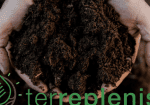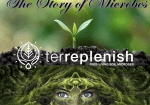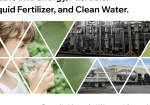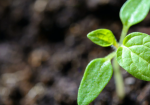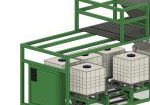Soil; The Skin of Our Planet
February 16, 2021
Did you know that 95% of all of our food is grown in the uppermost layer of soil? Topsoil is no doubt one of the most important elements of all life on Earth and has become a hot topic in recent years as we have begun to see the effects that our modern-day environmental and agricultural practices have had and continue to have on the health of our soil.
Years and years of harmful practices done to our soil has led us to a detrimental conclusion; it is estimated that we only have 60 harvests left if we continue with the same agricultural practices we have used for generations. It takes up to 1,000 years to build 3 inches of topsoil, but without healthy soil, new soil cannot be built. We are left with the startling reality that our topsoil, what sustains and feeds, is deteriorating at an alarming rate.
So what now? How can we reverse this? Soil is a dynamic living system that we have only barely begun to understand. However, there are plenty of solutions that have been proven to drastically improve and regenerate our depleted grounds. We are committed to the soil regeneration movement and committed to providing solutions that we can each do in our daily lives to revitalize what has been degraded.
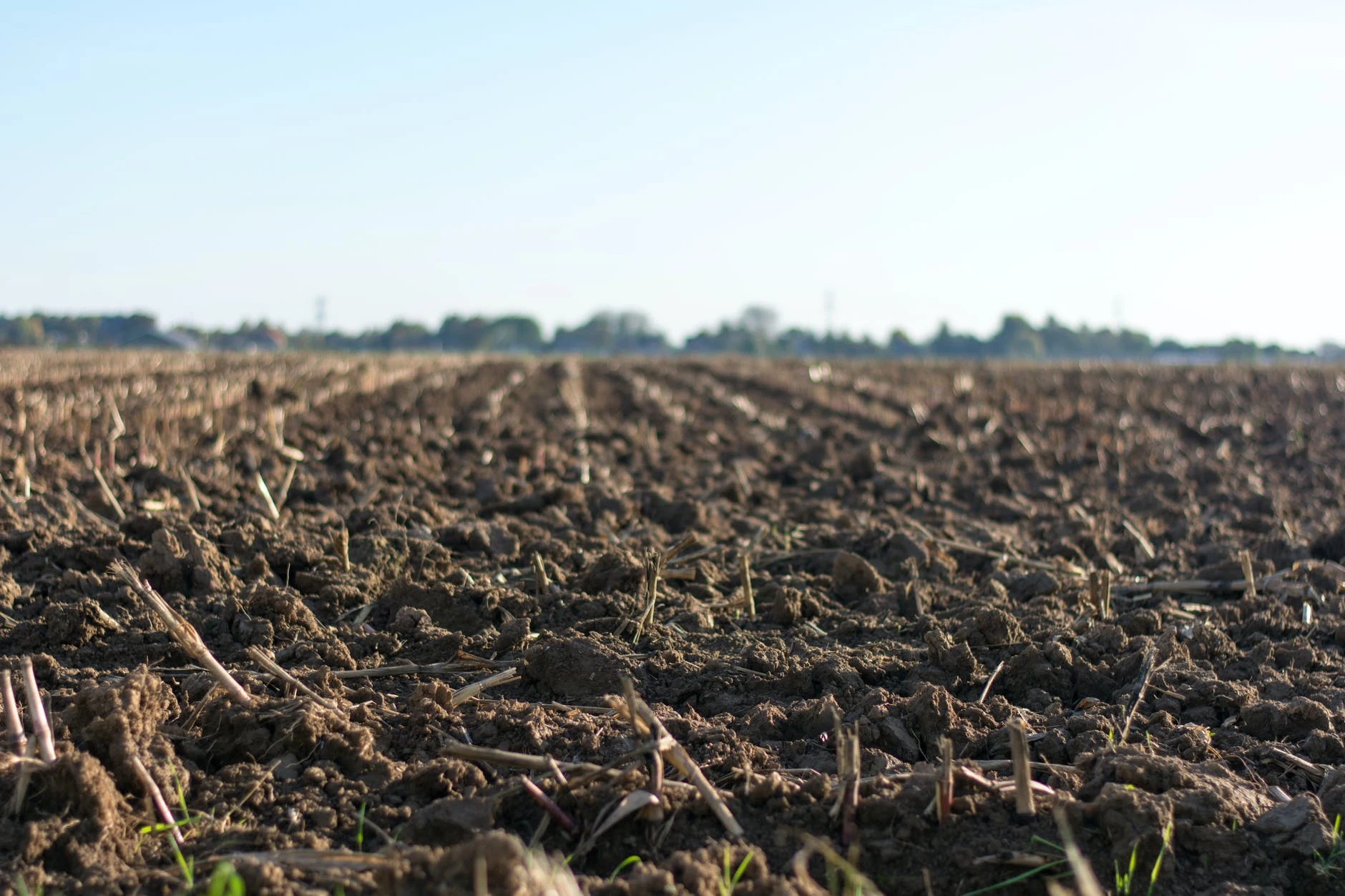
The Role Soil Has on Our Planet
1.) Food and Nutrients
Soil is responsible for not only growing our plants but also giving the plants we eat the proper components needed for optimal health in a human body. The plants we eat are the byproduct of our soil; what we feed the soil is what we feed our plants which is what we feed ourselves. Soil quality is directly linked to food quality.
2.) Climate Health
Soil health and climate health are linked. Soil is an important part of the carbon cycle (the process in which carbon atoms continually travel from the atmosphere to the Earth and then back into the atmosphere). Sustainable, healthy soils possess an increased ability to store carbon, thereby slowing down or completely reversing the process of climate change.
The film Kiss the Ground goes into depth on the subject of how healthy soils can lead to a healthier climate. We highly recommend watching this amazing documentary about soil! Click here to find out more.
3.) Water Quality
Healthy soils capture and store water much more than the degrading soil we see in our agricultural land today. Soil can act like a sponge, absorbing water and nutrients, replenishing groundwater, and filtering out pollutants. With a healthy soil structure, infiltration of water into the soil enhances, which allows much more water to be held in the soil profile. It is said that with every 1% increase in organic matter, U.S. croplands could store the amount of water that flows over Niagara falls in 150 days.
Agricultural Practices That Harm the Soil
1. Tilling. Tilling churns the soil to expose lower layers to the sky. This allows oxygen to reach a lot more of the dirt’s surface area, drastically increasing free-living bacteria and fungal activity immediately. These little microbes love getting all the oxygen they can absorb. Unfortunately, stoking the fire in this way means they also eat up all the available organic matter in the soil at a very fast rate. Since this is often done weeks before planting, the action of tilling can cause the microbes to eat up their food supply and starve out before roots can get in the ground to take advantage of all that activity.
2. Chemicals. Soil is a living organism in its own right rather than inert material that has to be manipulated with chemicals in order to become viable. Chemical fungicides, herbicides, and fertilizers greatly impact the integrity of soil by destroying and killing essential microbial populations, soil crumbs, and beneficial fungi, reducing drainage and air circulation. Did you know that there are more microbes in a teaspoon of soil than there are humans on the planet? Well, that is if we stop disturbing the microbial population. Microbes are essential to the soil because they provide healthy soil structure, help cycle nutrients, and prevent pathogen infection. These chemicals affect our soils, make their way into our waterways, and pollute the air.
3. Mono-cropping. Mono-cropping is the agriculture practice of growing the same, single crop year after year, without rotation or multi-crop growing. Mono-cropping harms the soil because, without cover-cropping, the soil is not protected from soil erosion from wind and rain. Each crop uses certain nutrients from the soil, and without crop rotation, important nutrients cannot be replenished back into the soil. Without proper ground cover and soil restoration, mono-cropping creates and spreads disease, causing farmers to use even more chemicals.
4. Poor livestock management. Conventional livestock management is considered to be poor livestock management. Thousands of acres of forest are cleared to make room for feedlots, and animals are quick to eliminate any pasture, exposing the soil to water erosion and wind. The main feed that is grown for livestock is mono-cultured corn and soy which not only proves a major issue for our soil but also proves unhealthy for the animals (which is then not healthy for us, as we consume these animals), as most animals, particularly cows, aren’t meant to digest grains. Without being properly managed or fed, our lands are vulnerable to land degradation and further emissions.
How We Can Restore and Build Our Soil
“Currently, the widespread use of conventional farming practices is damaging soil ecosystems, reducing biodiversity, and heating up the planet. However, we can change this by introducing regenerative agricultural practices that restore ecosystems and rebuild soils. By stopping deforestation, integrating soil health principles into crop and livestock management, and creating localized food systems, we can decrease our nonrenewable energy needs, regenerate the Earth’s arable land, and sequester carbon in the soil and aboveground biomass to reverse global warming.” – Kiss the Ground
Aside from discontinuing our current agriculture practices, there are many other things that we can do (whether you are a farmer or not) to begin supporting, building, and restoring our soil. Here are our top 10 suggestions:
1. Grow your own food. Nothing is better than growing it yourself! Growing your own food is simple and gratifying. To learn how to start your own garden click here.
2. Support regenerative farms. When you can’t grow your own food or raise your own animals, sourcing your food straight from farmers who use practices that heal and regenerate the soil is the next best option! A map of where you can locate regenerative farms around the world can be found here.
3. Reducing soil disturbance. Reducing the disturbance of soil (such as tilling) can greatly improve the soil structure, can increase crop yields, water conservation, and microbial population. Try using a digging fork or broad fork instead!
4. Increase biodiversity. Introduce native plant species, wildflowers, and attract pollinators into your garden or yard! Quit chemicals and cut back on lawn maintenance to increase biodiversity. Read more about the benefits of creating more biodiversity on our agricultural and personal lands here.
5. Ditch the chemicals. As mentioned above, chemical fertilizers, herbicides, and fungicides greatly impact the health of the soil by killing off beneficial fungi and microbial life. Instead, use compost as a fertilizer, and practice methods like companion planting and diversifying your garden for pest control.
6. Crop rotation. Rotating your crops allows for the nutrients within the soil to be restored and prevents your soil from being depleted. To learn more on how to rotate which crops click here.
7. Composting. Composting not only reduces food waste but also provides us with an amazing soil fertilizer for our garden! If you don’t have a garden, click here to see how you can still use compost at home. And here is our blog all about composting and how you can start.
8. Microbes. Sustainable populations of beneficial microbes are essential for healthy soils because they fix airborne nitrogen into the root zones of the plants. They also increase the water retention capabilities of the soils. Increasing biodiversity, avoiding chemicals, composting, cover-cropping, mulching your garden beds, and keeping soil well-watered, all aid in the increase of microbial activity.
9. Support and learn from companies that work to regenerate the soil and planet. Here is a list of organizations that do so.
10. Purchase Terreplenish! Terreplenish® is a proprietary blend of live, beneficial microbes that rapidly restores agricultural soil to its natural, vibrant state. To learn more, click here.
Resources:
Teaming With Microbes by Jeff Lowenfels
Related Posts
Grow Better with Terreplenish®
Proven nitrogen-fixing results from our blend of proprietary
free-living nitrogen-fixing microbes.
100% all natural and OMRI listed for organic use on:


